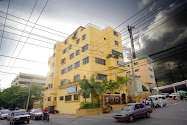(no pictures due to poor network connection)
Life is not back to normal after Tuesday’s earthquake. Yesterday morning people were visibly tense
and in somewhat of a daze as they were walking around reading newspapers and
many shops remained closed. Bricks were
scattered around the streets and many stores remained closed. Even today many people remain in tents and
under tarps in front of their homes and stores.
The workload continues.
Four thoracolumbar fractures were on our operating schedule today. Dr. Shrestha the Chief of Orthopaedics at
Kathmandu University Hospital is a young and very talented surgeon. He and I have been operating simultaneous
spine fractures in two operating theatres for the last several days. After we finish the spine injuries we will
operate on a severely displaced acetabular fracture this evening.
Given the limited economic resources in this country the
quality of surgical care is very impressive.
The operating theatre is a beehive of activity. Cheerful nurses move quickly to turn rooms
over and the simplicity of the system allows for efficiencies that we are not
accustomed to in the United States. All
the implant choices that we have at home are not available, but there are many
economic alternatives that come from India.
We implanted $40 Indian pedicle screws in our last case instead of the
$900 screws that we use at Loma Linda.
There is a noticeable difference in the feel of the instrumentation but
the job got done.
The generous donation of spinal instrumentation from
DepuySynthes turned out to be the single most important tray of instruments and
implants that I brought on this trip and I used this set on the majority of the
spine fractures that I operated. The
positive impact that we have made here is the result of many generous donors,
hard working people at LLU Global Health Institute, our partners who had to
rearrange schedules, and those that work in our offices. This is truly a team effort and gratitude is
owed to many.
The people of Nepal continue to suffer, hospitals are
overcrowded, and the recovery process will be long and difficult. Thankfully
very few patients required amputations after this disaster however we have seen
a variety of orthopaedic injuries that will result in permanent disability, the
most severe of which are patients who suffered spinal cord injuries. Many of these occurred from jumping out of
buildings that were on the verge of collapsing during the violent tremors.
For a first hand account of Tuesday’s earthquake see http://ireport.cnn.com/docs/DOC-1241256





